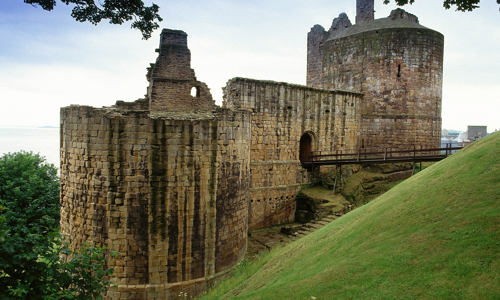History
An Irish import
Round towers are typically Irish. Nearly 100 may have been built in Ireland between AD 900 and 1200, and more than 60 survive today. They were primarily used as bell towers, though they also often found use as treasuries and refuges.
Only three round towers are known outside of Ireland:
- Abernethy
- Brechin, Angus
- Peel, Isle of Man
There is no direct architectural link between these towers and the round towers attached to churches found in Orkney.
No one knows how Abernethy got its round tower, but over the years it has found use as a bell tower and as a secure place for local people and their possessions in times of danger. It still functions as a bell tower today.
An unusual tower
Abernethy’s bell tower is 22m tall and 5m wide. Judging by the decoration around its first-floor doorway and four belfry windows, it is believed to have been built in about AD 1100. Its bell dates from 1782 and its clock from 1868.
There was a church at Abernethy from at least AD 600. It soon became the episcopal centre of the Pictish church, but was surpassed by St Andrews in the 1100s.
The Pictish symbol stone mounted on the tower was added in the 1900s. It depicts:
- a hammer and anvil, separated by a ‘tuning fork’
- a crescent and V-rod
The exact meaning of the symbols is unknown.
Grisly find
Excavations to the tower in 1821 uncovered a skeleton and fragments of an urn. Below these were flagstones and ‘many more human bones’, including seven skulls. These burials pre-date the construction of the tower, but by how long is not certain.















